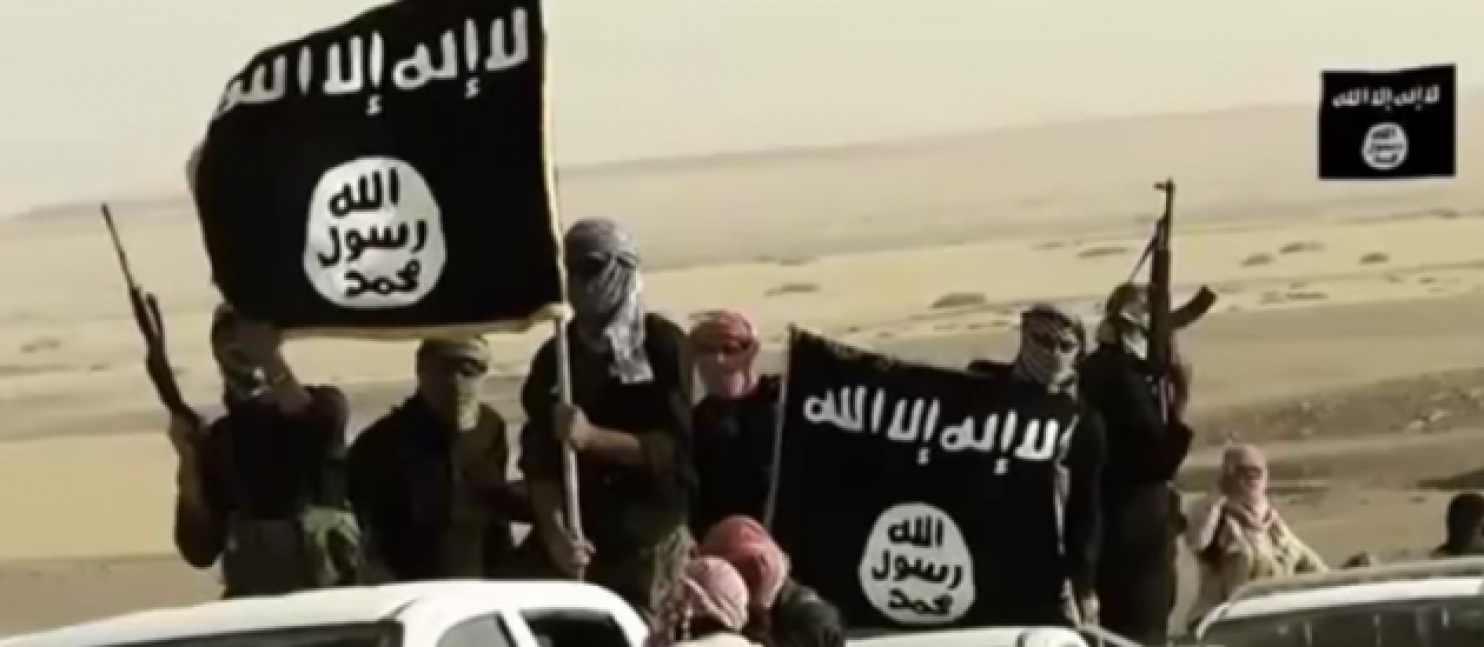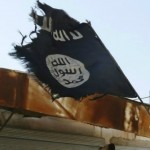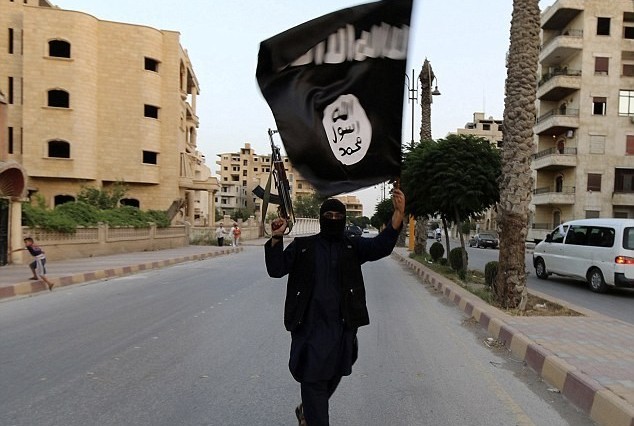by Graham E. Fuller
ISIS has particularly targeted Shi’a as a key part of their brutal onslaught against any practice of Islam that does not conform to their narrow ahistorical interpretation view of their religion. We hear a lot from western commentators about some “eternal split” between Sunni and Shi’ite Muslims. But does this idea really have enough explanatory power to properly understand the motivations behind the actions of ISIS in Iraq and Syria—particularly its anti-Shi’ite obsessions? What else may be going on here? Here are a few efforts to start unpacking this multi-layered issue.
First, a historic split does of course exist between Sunni and Shi’ite branches of Islam from early on. But after some 1500 years, this enmity really has more to do with communitarian rivalries than it does with any particular theology. In the past in places like Iraq intermarriage between Shi’a and Sunni was common enough—but not after the overthrow of Saddam. Think Protestant and Catholic—at odds for 500 years; but how much did that split really have to do with theology as opposed to communitarian interests? Rival neighbors? Northern Ireland still bleeds, but religion is only the elevated symbol of those community fears and rivalries.
Real and practical questions are at hand. Will Shi’a or Sunnis take power in Iraq? Or Bahrain? Or Syria? Or Yemen? Communities have a lot riding on it. It’s community A versus community B—call them what you wil—in a struggle for advantage. (Some readers may have read the great children’s book by Dr. Seuss, “The Sneetches”— those creatures, depending on whether they were with or without green stars on their bellies, provided the foundation for discrimination.)
But we can’t deny ISIS’ extreme theological views that supply part of their ugly motivation as well. ISIS is a close kin to the Wahhabi /Salafi school of Islam in Saudi Arabia and elsewhere. In fact, these people don’t see Christians or Jews as first and foremost their main enemy—they see other Muslims who don’t share their narrowly exclusionist views as the chief target. Shi’a top the list, for sure, but so do more liberal schools of Sunni Islamic thinking—that is, nearly everybody else. This is about a massive, nearly psychotic purge of Islam of anything they don’t approve of. (See my blog discussion of the Caliphate in ISIS thinking).
More important than religion too, is power and control of the state. Sunnis have ruled Iraq since time immemorial; but with the US overthrow of Saddam Hussein Sunnis had to yield power in a democratic election to the majoritarian Shi’a—a massive setback, and enough of a blow right there to fill coffers and recruit Sunni fighters to recover their lost political and economic power. Were the Shi’a to wholeheartedly embrace Sunni ideology tomorrow, Sunni extremists would still want to throw “them” out of power and restore their own community.
Then there is geopolitics. Iran may today be a Shi’ite state, but more importantly it is an ancient Persian state—linguistically and culturally different from Semitic Arabs. Ethnic rivalries between Persians and Arabs—and Turks—go back long before Iran ever became a Shi’ite state. (And remember, Iran only became a Shi’ite state 500 years ago. Before then Sunni Iran struggled with Sunni Arabs over who would lead the Sunni world.) So when Iran stands against Saudi Arabia today, the ethnic element in Gulf rivalry is at least as weighty as any religious one.
And then there are contemporary ideologies. Saudi Arabia is the counter-revolutionary state par excellence in the Middle East today. (That’s why it hates the extremely Sunni Muslim Brotherhood—because the Brotherhood leans towards democratic regime change—utterly anathema to Riyadh.) And Iran too is a revolutionary state. This is where the Saudi invocation of a religious war against Shi’ism—over what essentially is ethnic and political/ ideological struggle—is particularly poisonous and destructive across the region.
Saudi Arabia’s counter-revolutionary role (not really related to religion but to holding on to power) is made clear by its own now harsh steps against ISIS—a movement that shares virtually the same Wahhabi religious vision as Riyadh. But of course it’s not really about Wahhabism either. The Wahhabism of ISIS is jihadi revolutionary, out to change the status quo and expel the West. The Saudis’ Wahhabism is out to defend that status quo and the regime clings to the West for safety. (Modern Iran also produced a quite modern revolutionary, even quasi-Marxist, vision of Shi’ite Islam, struggling for the rights of the “global oppressed.” Another reason Wahhabi Islam, in Saudi Arabia at least, hates it.)
All of this indeed suggests how many layers –and pretexts—for conflicts exist between Shi’a and ISIS-style Salafi Sunnism today. Invoking religion is the merely the simplest and seemingly most resonant banner to which ISIS appeals. And if you are a Sunni struggling to regain political power in Iraq or Syria, and you live in the present murderous social chaos and political turmoil in those countries, you might indeed find appeal in the ISIS ultra-orthodox Sunni appeal.
No one will deny that the terms Shi’a and Sunni can still evoke many passions in the Middle East today. But it is important not to accept the concept of some “eternal religious differences” existing between these two sects of Islam. If there are Sunni-Shi’ite splits, there are equally much splits among Sunnis, and among Shi’a as well. The problem is that if we view these conflicts through primarily religious lenses we are indeed accepting them as “primordial” conflicts, that is, never really susceptible to rational solution. But to view them as power struggles, rival interests, at least reduces the problem to issues of changeable conditions of political governance. It is astonishing how quickly sectarian differences can vanish again under conditions of social order and prosperity, when members of both communities have other interests to absorb their attention than simply pursuing sectarian rivalries. But right now we don’t at all have conditions of social order and prosperity; the destruction of Iraq in the US invasion, and the subsequent internal war in Syria, have both produced optimal conditions for today’s sectarian hatreds in their most emotional and violent form.
Restoration of peace, order and calm to the region will not occur at gun point and will indeed take some reasonable time to come about. This is the indispensable first step in shifting people’s attention away from communitarian rivalries to the business of getting on with a living and subordinating ethnic and sectarian irritations to more practical interests. That is, after all, the way most of them have managed to live together in these states for most of the past.
This article was first published by Graham E. Fuller and was reprinted here with permission. Copyright Graham E. Fuller.






This points up the reason the west has no business stirring the pot in the MENA or anywhere else for that matter, unless death and destruction is the end product. Fact is, with over a billion Muslims in the world, it’s a stupid way of doing things. I suppose in one respect, one might see it as a diversion to keep the minds of the western populations off what their own government[s] are doing at home, as in corruption, looting, dumbing down in the education department, etc. Ineptness, stupidity, greed, all seem to play out in this game of keeping the status quo in power. Considering the tract record of the failures so far, why continue? It’s almost as if humanity, as far as it goes, is on a crusade to destroy itself, as far as the various western governments go along with the Sunni & Shi’a sects, IMHO.
“If there are Sunni-Shi’ite splits, there are equally much splits among Sunnis, and among Shi’a as well. ”
I disagree with that. Shias are not divided. They have a religious hierarchy that works to prevent any division. Two cities, Qom and Najaf respectively in Iran and Iraq,are recognized as the centers of Shiism. These centers represent the two facets of Shiism, the Arabic and Iranian. They are complementary.
The Sunnis have no religious hierarchy at all. They are divided in numerous sects with opposing ideologies. The division has become more apparent in the region since Turkey acquired an economic power and promoted a moderate version of Sunnism in the region in competition with Saudi Arabia . This kingdom, has for decades invested billions of dollars to promote its more conservative version of Islam not only in the Arab world but worldwide. There is a very fine line between this conservative version and extremism .Al Qaeda and ISIS have crossed it and have now millions of adepts that were formed in the Saudi funded theological schools in Pakistan, Saudi Arabia, Kuwait, the UK, France etc…
The Islamic revolution in Iran, the fall of Sunni power in Iraq and the emergence of Turkey as a Sunni power have shaken Saudi Arabia pretense of representing Islam. It has created a deep identity issue within the Arab Sunnis. To affirm their identity in relation to Shiism, the Sunnis have started a war against the Shias and their allies. Yet very soon their opposing ideologies became proeminent and took over. They are now fighting against each other.
In summary the Shias power emergence seems to have been the catalyst that has revealed the hidden internal Sunnis conflicts.
Unless the Sunnis finally confront their divisions and find a compromise, wars will continue to create chaos in a vicious circle. Paradoxically this will boost Shiism in the region.
It is an illusion to believe that prosperity will erase the sectarian differences. These differences can be dormant but would re-appear at the first crisis. We can see this in Turkey where paradoxically the relation between Alevis and Sunnis became more acrimonious in time of prosperity.
Religion in the middle-east is deeply entrenched in the psyche and it may need centuries to extirpate it.
In Iraq, Sunni and Shia while they had their differences co-existed before the brutal US military invasion and occupation. The two sects lived on the same streets, worked together and even intermarried.
Then on February 22, 2006 came the US-abetted Samarra mosque bombing when the Shiite al-Askari shrine in Samarra was destroyed. That changed everything, and promoted in MENA the US divide-and-conquer strategy and ISIS.
Hey, it’s good for arms sales.
It’s not only ISIS that hates the Shias. Hilary hates them too